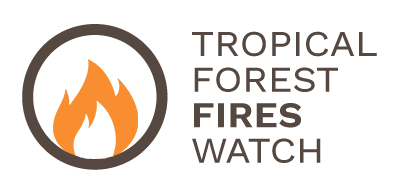Satellites are used to collect information on fires. The data do not detect actual fires but rather indicators of fires, such as heat and smoke.
At the global level, there are two main data sources:
- NASA operates two satellites which collect near-real-time data on active fires. VIIRS is a high-resolution satellite but it’s data only goes back to 2012. MODIS is a lower resolution satellite but has a longer time series, going back to 2001. The European Union’s Global Wildfire Information System (GWIS) also uses data from the VIIRS and MODIS satellites to detect active fires.
- The US National Oceanic and Atmospheric Administration (NOAA) has its own satellite and reports separately from NASA.
The commonly cited Global Forest Watch data uses a combination of information from the NASA and NOAA satellites to track fires. In Brazil, the national space institute (often referred to by its Brazilian acronym, INPE) uses data from the NOAA. Indonesia does not have a national space institute and therefore Global Forest Watch Fires data can be used to track fire alerts there.
